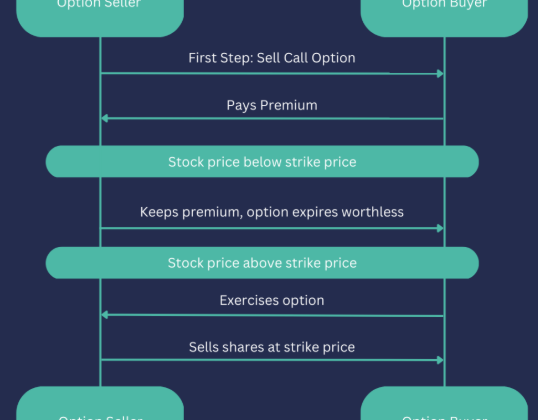Looking for ways to increase your income in your spare time? There are plenty of side hustle opportunities that can help you earn extra cash. Whether you’re interested in e-commerce, freelancing, or using your creativity, this guide will help you discover how to make money on the side. We’ll also offer tips on choosing the right side hustle based on your skills, interests, and available time. So, whether you’re looking for a flexible part-time gig or aiming for a more substantial income, read on to find a side hustle that works for you.
Exploring E-commerce for Extra Income
E-commerce provides a world of possibilities for making extra money, particularly for those with digital skills. There are various ways to sell products or services online, from starting a dropshipping business to managing social media accounts for small businesses. Launching your own online store is another viable option. E-commerce allows you to work as an independent contractor, giving you the flexibility to earn a steady income while working on your own schedule.
Selling on eBay
Becoming an eBay seller is one of the simplest ways to earn extra cash. With minimal startup costs, you can sell a wide variety of products. It’s a great side hustle for beginners looking to make some money without a significant time commitment. eBay offers an easy entry point into the world of online sales, making it a solid option for those looking to build passive income over time.
Using Facebook Marketplace
Facebook Marketplace is a popular platform for buying and selling items locally, making it an excellent place to earn some extra income. It requires little upfront investment, and you can sell anything from clothes to furniture. This platform is perfect for people looking for an easy way to sell items without much effort.
Launching an Etsy Store
For those with a creative streak, opening an Etsy store can be an excellent side hustle. Etsy provides a marketplace for handmade, vintage, and unique goods. This is a great option if you enjoy crafting or have a knack for creating original products. Plus, you can manage your store from the comfort of your own home, making it a convenient and flexible way to earn money.
Tapping into the Sharing Economy
The sharing economy has made it easier than ever to monetize assets and skills. Platforms like Airbnb and Uber allow you to make money by renting out space or providing rides. These side gigs offer a lot of flexibility and are an ideal way to generate income with minimal effort.
Driving for Uber or Lyft
If you have a car and some spare time, driving for Uber or Lyft can be a great side hustle. You can earn money by picking up passengers at your convenience. The flexibility of choosing your own hours makes this an attractive side gig, especially if you’re looking for quick cash.
Renting Out Your Space on Airbnb
If you have an extra room or property, renting it out on Airbnb is another way to earn extra income. Hosting guests provides a flexible way to make money, and it can be done with minimal investment. Plus, Airbnb allows you to set your own prices and availability, giving you full control over your income.
Profiting from Digital Skills
If you have digital skills, there are countless ways to monetize them. Whether it’s managing social media accounts, offering freelance services, or starting a YouTube channel, digital skills are in high demand. These side hustles can be particularly lucrative, as they often come with flexible hours and the potential for long-term growth.
Managing Social Media for Small Businesses
Many small businesses need help managing their social media accounts. If you’re familiar with platforms like Instagram, Facebook, and Twitter, you can offer your services as a social media manager. This side hustle allows you to work with clients remotely and earn money while helping businesses grow their online presence.
Freelancing on Fiverr or Upwork
Freelancing on platforms like Fiverr and Upwork is an excellent side hustle if you have skills like graphic design, writing, or marketing. These platforms allow you to offer services to a global audience, and you can set your own rates and work hours. It’s an ideal option for anyone looking to earn money by doing what they’re good at.
Offering Technical Support
If you have technical expertise, you can offer IT support remotely. Helping clients with software issues, hardware troubleshooting, and cybersecurity is a valuable service. You can set your own schedule, and many small businesses are looking for freelance IT experts to assist with their technical needs.
Sharing Your Knowledge
Monetizing your knowledge can also be a highly profitable side hustle. You can teach others by offering online tutoring, creating online courses, or writing e-books. These activities allow you to share your expertise while earning money in the process.
Offering Virtual Tutoring
Online tutoring is an excellent way to earn money by helping others. You can offer tutoring in subjects like math, science, or languages via platforms like Skype or Zoom. This side hustle is flexible, allowing you to work with students on your schedule.
Creating and Selling Online Courses
If you have expertise in a particular area, you can create an online course and sell it on platforms like Udemy or Teachable. Courses on topics like photography, marketing, or coding are in high demand. This allows you to generate income passively once your course is created and published.
Writing and Selling E-books
Writing e-books is another great way to share your knowledge while making money. You can write about topics you’re passionate about or share personal experiences. Platforms like Amazon Kindle make it easy to publish your e-book and start earning royalties.
Leveraging Culinary Skills
If cooking is your passion, there are several side hustles that allow you to turn your culinary skills into income. From teaching cooking classes to becoming a personal chef, there are plenty of opportunities in the food industry.
Becoming a Personal Chef
Becoming a personal chef is an excellent side hustle for those who enjoy cooking for others. You can prepare customized meals for individuals or families, catering to specific dietary needs. This side hustle is ideal if you want to work closely with clients and provide a high-quality service.
Starting a Food Truck
Starting a food truck can be a profitable way to share your culinary creations with a wider audience. Food trucks have become increasingly popular, offering a great opportunity to sell unique dishes while moving from one location to another. It requires an upfront investment but can be highly rewarding with the right marketing strategy.
Personal Services Side Hustles
If you enjoy helping others and providing services, there are several opportunities in personal services that can generate extra income. These include pet care, child care, and cleaning services.
Offering Dog Walking or Pet Grooming
Starting a dog walking or pet grooming service can be a great way to earn money, especially if you love animals. Pet owners are always looking for reliable people to care for their pets, and this side hustle can be done on your own schedule.
Babysitting or Childcare Services
Babysitting is another easy way to earn extra money. If you enjoy working with children, offering childcare services can be both rewarding and profitable. Many parents need reliable help with childcare, making this a great side hustle idea.
House Cleaning Services
House cleaning is in high demand, and it’s a straightforward way to earn extra cash. You can offer services like regular cleaning, deep cleaning, or specialized services like window washing. It’s a flexible side gig that allows you to work around your schedule.
Capitalizing on Your Creativity
If you have a creative side, there are plenty of ways to monetize your talents. Whether it’s graphic design, writing, or crafting, creativity can be a valuable asset in the side hustle world.
Designing Logos on 99Designs
For those with design skills, creating logos for businesses is a great side hustle. Platforms like 99Designs allow you to showcase your work and connect with clients in need of custom logos. It’s a lucrative option for graphic designers who want to make extra money doing what they love.
Teaching Music or Language Lessons
If you’re skilled at playing an instrument or speaking a second language, teaching music or language lessons can be a rewarding way to earn extra income. You can offer lessons either in-person or online, providing flexibility for both you and your students.
Conclusion
The possibilities for earning extra income are endless, and there’s a side hustle out there for everyone. Whether you’re interested in e-commerce, digital skills, personal services, or creative endeavors, there’s something that aligns with your strengths and interests. By choosing the right side hustle based on your available time and skills, you can boost your income while working on your own terms. Start your side hustle today and take the first step toward achieving your financial goals.

















